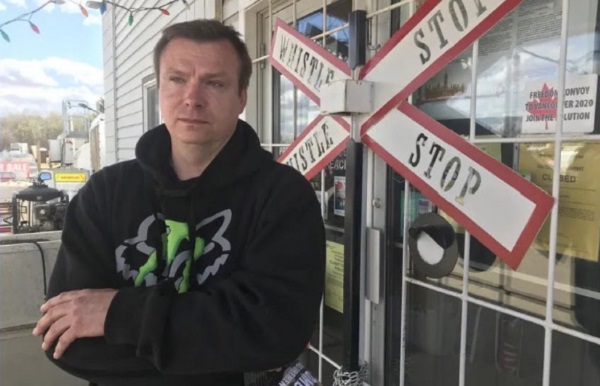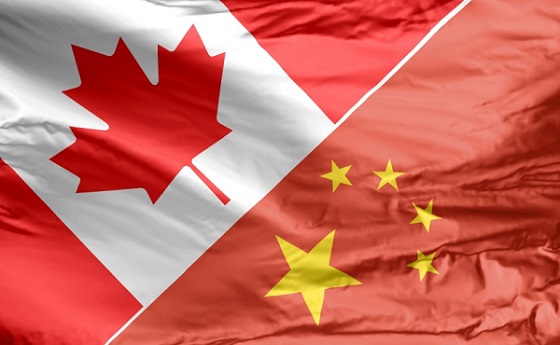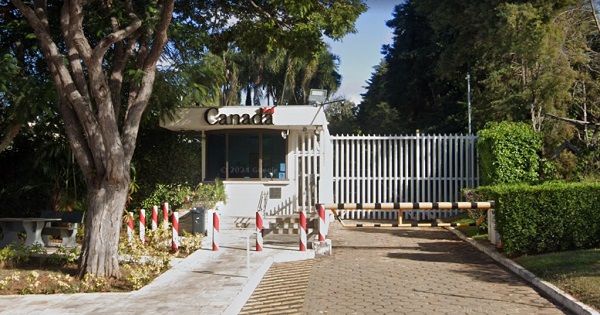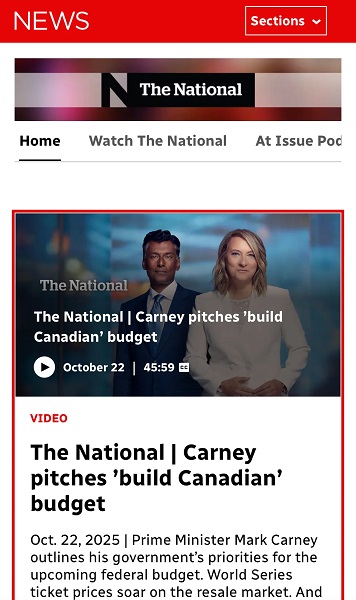Alberta
Class Action Lawsuit Against the Province of Alberta – Rath on Behalf of Ingram and Scott

|
|
To preface, the amount of knowledge I have in our legal system would fit into a thimble with a lot of room leftover to hold, well…a lot of other stuff that would fit into a thimble.
But I’m going to do my best to cover the certification hearing for the Class Action Lawsuit against the Province of Alberta by Rath and Company, on behalf of Rebecca Ingram and Chris Scott.
For the purposes of keeping this to a reasonable length, I’ll be hitting more along the lines of the high-notes instead of going through and summarizing the thousands of pages submitted by Rath and Co + the Province and keep to what I found most interesting throughout the 2 days I’d spent down at the courthouse viewing. The hearing was to allow both sides to submit their briefs and so that Justice Feasby could make sure that he understood the base of their cases, qualify information and take it away for judgement.
Even if Rath is successful in having this Class Action Certified, there is still a long road ahead to succeed in getting damages covered and a trial to be had and because of the specifics of the mishandling by the Province throughout the pandemic, if they are successful here, it doesn’t mean that every other province can proceed ahead, under the same criteria.
What does this mean?
The previous case against the Province with Rebecca Ingram, showed that the non-pharmaceutical interventions – lockdowns, businesses closed, capacity limits…were ruled Ultra Vires (beyond legal power or authority), by Justice Romaine…in that, these weren’t actually made by the Chief Medical Officer of Health (CMOH), Deena Hinshaw, they were made by Cabinet…and Cabinet hid behind Hinshaw issuing these orders under the Public Health Act instead of working with the Emergency Management Act.
Because of “Cabinet Privilege”, information was revealed by the CMOH and Justice Romaine – in camera (private) – we can only speculate the reasons for this.
One could argue that because the province and Alberta Health Services got 100% of everything wrong during the pandemic, that this was just another link in the very weak chain…
However, it’s also possible that the Cabinet Members making these decisions wanted to hide and remain hidden for political purposes, as in…those making the decisions to close down businesses didn’t want to have to face voters in a subsequent election, knowing the damages that they’d caused in the business community.
Seeing how many small businesses were closed down, to never reopen…savings spent, jobs and homes lost, lives impacted by these decisions, arguably touching every single person in the province, would make for some bad press and a constituencies filled with voters showing up with a chip on their shoulder towards those who made these decisions and still chose to run for Legislature again.
In addition to this…If the orders were run through the Emergency Management Act, all of the businesses impacted would be entitled to compensation, whereas under the Public Healthcare Act…they weren’t.
It’s based on these specificities that Rath argued that the Province acted in ‘Bad Faith’ as the basis for their case, in that, the province made decisions that they didn’t have the authority to make and absolutely had to have known would harm businesses and made them through the PHA which restricted these businesses from being compensated.
Rath had completed his presentation of their brief before lunch on the first day, where Feasby had a couple of points that he wanted clarified…which was completed after lunch on this same day.
And then…the Province took the podium.
As I’d previously stated, this was a bloodbath for the afternoon of Day 1 and continued on throughout their presentation on Day 2, where by Feasby openly mocked each member of the Province – Dube, Chu and Flanders.
Rightfully so, if I might add, because a lot of their logic was illogical and even to those of us in the gallery, laughable both with and without comments from the Justice.
On day 2, because of the chorus of opened mouthed guffaw from the gallery, we’d all received a warning try and keep it down.
Arguments made by the province which were stunning and laughable:
- The public does have a right to accountability and that these would be ‘Ballot Box Issues’, of course recognizing that Cabinet was the ones who made these decisions but because they were hidden behind Cabinet Confidence, we can’t actually have accountability, which of course Dube knew;
- The Plaintiffs (Rath on behalf of Ingram and Scott) needed to name the members responsible – which were, again, hidden by cabinet confidence;
- There is no fiduciary accountability afforded under the Public Health Act, where the interventions were deemed Ultra Vires;
- The Province couldn’t have known that businesses would be harmed by the orders – where Feasby stated that it would be impossible for them to Not Know;
- Businesses are not members of a vulnerable group – though were identified by the CMOH orders;
- There is no Nexus or Proximity between the Acts (CMOH orders) and Injury – where Feasby stated causation where orders made, closed businesses, that caused injury was the connection;
- A breach of the Bill of Rights does not necessitate compensation, where the use of the Public Health Act was engaged illegally by cabinet;
- No common issues exist – where all businesses that were impacted were impacted financially;
- Not all businesses that were impacted abided by the CMOH orders, though they may be able to still show financial losses during these times;
- Abuse of Power, by Cabinet in their orders, wasn’t actually an Abuse of Power because it was done in good faith;
- Even without the orders, during the pandemic, people still wanted to just stay home and avoid going out – they actually said this;
- Although the Pandemic Orders were deemed Ultra Vires, they were valid at the time. This was particularly stupid as an argument made repeatedly by Chu and lost the province some large points with Feasby. Her logic is that the orders WERE Valid up until the time they were deemed Ultra Vires…where Feasby stated, a definitive ‘Nope’. Once they were deemed Ultra Vires, this extended back to when they were put in place.
- The Plaintiffs should be suing Alberta Health Services, arguing that AHS is not the province, again another stupid point where the judge stated, “You can’t stand here with a straight face and make this as an argument”.
- Expropriation of businesses wasn’t actually expropriation (businesses shut down or limited in capacity were essentially expropriated – partially or fully taken away from leaseholders and property owners), because there were no transfer of titles and they weren’t kept by the province on a forever hold. When I’d asked Eva Chipiuk about this, she stated that the province had effectively made this up as terms of expropriation, this isn’t what it actually means…and this was clarified to the Justice by Jeff on reply following the Province stating their case on Day 2.
- Classes of businesses could not be identified for a Class Action Lawsuit – where, orders put out by the CMOH on behalf of Cabinet, specifically identified the types of businesses that would need to close or limit capacity. Jeff made a point on this where in the early stages, Casinos and Stripper Bars were allowed to be left open while Schools were closed. I did get a good laugh out of this recollection of events;
- It would be more beneficial for businesses who were harmed to represent themselves individually instead of through a Class Action – where smaller businesses would pay in excess of their claim in legal fees and clog the courts for decades;
- Businesses that lost money throughout this time would have immediately made it back once they were reopened – of which there is absolutely no way they could make this determination especially given the fact that hundreds of businesses closed forever during this time;
- Chris Scott and the Whistle Stop Cafe isn’t a suitable representation in the class action because Scott didn’t abide by CMOH orders, crowd funded over $100k, needed to hire more staff because of the surge of business that he’d received because of publicity around his location, paid off a loan for property, all in 2021…where, Chris did actually abide by CMOH orders in 2020, did lose money, was on the verge of bankruptcy and only worked to mitigate damages following several months of losses due to the CMOH orders;
- Chris Scott may have actually made more because of the pandemic, despite the fact that he was arrested, closed down, abided by CMOH orders in 2020, was getting death threats because of being branded negatively through media spun by his lack of compliance for the orders to keep him from losing everything;
There may be more…this is what I could get out of the 36 pages of notes that I’d taken over the course of the 2 days…but basically the Province brought in the C-Team of Lawyers making in attempts to make the case that:
AHS is not the province, acted illegally but in good faith, is not responsible for any damages because they didn’t fully expropriate businesses forever, couldn’t have known that businesses wouldn’t suffer from financial losses in being closed or restricted for months on end and even if they did, probably made their money back if not more money when they finally opened and couldn’t be lumped together because REASONS.
Whereas against the province, Rath and Company makes the claim that:
Cabinet made decisions that turned into illegal orders under the Public Healthcare Act, not using the Emergency Management Act so that they could hide the identity of the decision makers and skate on being financially liable for losses they knew would be incurred by businesses that were shut – acting in bad faith.
And again…while I don’t know a whole lot about the legal system, all of the laws and terms used throughout these 2 days, can appreciate that all requirements for a Class Action were met and responded to. The legality and relevance of these will be weighed by Justice Feasby and he’d seemed confident that he’ll be able to have a ruling on the Certification for Class Action by December 1st, 2024…and closed out with a statement that he wasn’t going to be accepting any additional documentation from either party. They’d effectively had their ‘day in court’, and had opportunity to clarify their cases.
Hope ya made it through all of this…and I hope it makes as much sense to you as does to me as in a solid – kinda. If you were watching the livestream or in the gallery and noted anything additional worthy of mention or correct me in any errors, please do so in the comments.
I’m looking forward to the next leg in this journey!
Alberta
Canada’s heavy oil finds new fans as global demand rises

From the Canadian Energy Centre
By Will Gibson
“The refining industry wants heavy oil. We are actually in a shortage of heavy oil globally right now, and you can see that in the prices”
Once priced at a steep discount to its lighter, sweeter counterparts, Canadian oil has earned growing admiration—and market share—among new customers in Asia.
Canada’s oil exports are primarily “heavy” oil from the Alberta oil sands, compared to oil from more conventional “light” plays like the Permian Basin in the U.S.
One way to think of it is that heavy oil is thick and does not flow easily, while light oil is thin and flows freely, like fudge compared to apple juice.
“The refining industry wants heavy oil. We are actually in a shortage of heavy oil globally right now, and you can see that in the prices,” said Susan Bell, senior vice-president of downstream research with Rystad Energy.
A narrowing price gap
Alberta’s heavy oil producers generally receive a lower price than light oil producers, partly a result of different crude quality but mainly because of the cost of transportation, according to S&P Global.
The “differential” between Western Canadian Select (WCS) and West Texas Intermediate (WTI) blew out to nearly US$50 per barrel in 2018 because of pipeline bottlenecks, forcing Alberta to step in and cut production.
So far this year, the differential has narrowed to as little as US$10 per barrel, averaging around US$12, according to GLJ Petroleum Consultants.
“The differential between WCS and WTI is the narrowest I’ve seen in three decades working in the industry,” Bell said.
Trans Mountain Expansion opens the door to Asia

Oil tanker docked at the Westridge Marine Terminal in Burnaby, B.C. Photo courtesy Trans Mountain Corporation
The price boost is thanks to the Trans Mountain expansion, which opened a new gateway to Asia in May 2024 by nearly tripling the pipeline’s capacity.
This helps fill the supply void left by other major regions that export heavy oil – Venezuela and Mexico – where production is declining or unsteady.
Canadian oil exports outside the United States reached a record 525,000 barrels per day in July 2025, the latest month of data available from the Canada Energy Regulator.
China leads Asian buyers since the expansion went into service, along with Japan, Brunei and Singapore, Bloomberg reports. 
Asian refineries see opportunity in heavy oil
“What we are seeing now is a lot of refineries in the Asian market have been exposed long enough to WCS and now are comfortable with taking on regular shipments,” Bell said.
Kevin Birn, chief analyst for Canadian oil markets at S&P Global, said rising demand for heavier crude in Asia comes from refineries expanding capacity to process it and capture more value from lower-cost feedstocks.
“They’ve invested in capital improvements on the front end to convert heavier oils into more valuable refined products,” said Birn, who also heads S&P’s Center of Emissions Excellence.
Refiners in the U.S. Gulf Coast and Midwest made similar investments over the past 40 years to capitalize on supply from Latin America and the oil sands, he said.
While oil sands output has grown, supplies from Latin America have declined.
Mexico’s state oil company, Pemex, reports it produced roughly 1.6 million barrels per day in the second quarter of 2025, a steep drop from 2.3 million in 2015 and 2.6 million in 2010.
Meanwhile, Venezuela’s oil production, which was nearly 2.9 million barrels per day in 2010, was just 965,000 barrels per day this September, according to OPEC.
The case for more Canadian pipelines

Worker at an oil sands SAGD processing facility in northern Alberta. Photo courtesy Strathcona Resources
“The growth in heavy demand, and decline of other sources of heavy supply has contributed to a tighter market for heavy oil and narrower spreads,” Birn said.
Even the International Energy Agency, known for its bearish projections of future oil demand, sees rising global use of extra-heavy oil through 2050.
The chief impediments to Canada building new pipelines to meet the demand are political rather than market-based, said both Bell and Birn.
“There is absolutely a business case for a second pipeline to tidewater,” Bell said.
“The challenge is other hurdles limiting the growth in the industry, including legislation such as the tanker ban or the oil and gas emissions cap.”
A strategic choice for Canada
Because Alberta’s oil sands will continue a steady, reliable and low-cost supply of heavy oil into the future, Birn said policymakers and Canadians have options.
“Canada needs to ask itself whether to continue to expand pipeline capacity south to the United States or to access global markets itself, which would bring more competition for its products.”
Alberta
From Underdog to Top Broodmare

WATCH From Underdog to Top Broodmare (video)
Executive Producers Jeff Robillard (Horse Racing Alberta) and Mike Little (Shinelight Entertainment)
What began as an underdog story became a legacy of excellence. Crackers Hot Shot didn’t just race — she paved the way for future generations, and in doing so became one of the most influential producers the province has known.
The extraordinary journey of Crackers Hot Shot — once overlooked, now revered — stands as one of Alberta’s finest success stories in harness racing and breeding.
Born in humble circumstances and initially considered rough around the edges, Crackers Hot Shot overcame long odds to carve out a career that would forever impact the province’s racing industry. From a “wild, unhandled filly” to Alberta’s “Horse of the Year” in 2013, to producing foals who carry her spirit and fortitude into future generations.
Her influence ripples through Alberta’s racing and breeding landscape: from how young stock are prepared, to the aspirations of local breeders who now look to “the mare that did it” as proof that world-class talent can emerge from Alberta’s paddocks.
“Crackers Hot Shot, she had a tough start. She wasn’t much to look at when we first got her” — Rod Starkewski
“Crackers Hot Shot was left on her own – Carl Archibald heard us talking, he said ‘I’ll go get her – I live by there’. I think it took him 3 days to dig her out of the snow. She was completely wild – then we just started working on her. She really needed some humans to work with her – and get to know that people are not scary.” — Jackie Starkewski
“Crackers Hot Shot would be one of the top broodmares in Albeta percentage wise if nothing else. Her foals hit the track – they’re looking for the winners circle every time.” — Connie Kolthammer
Visit thehorses.com to learn more about Alberta’s Horse Racing industry.
-

 Business1 day ago
Business1 day agoTrans Mountain executive says it’s time to fix the system, expand access, and think like a nation builder
-

 International1 day ago
International1 day agoBiden’s Autopen Orders declared “null and void”
-

 MAiD1 day ago
MAiD1 day agoStudy promotes liver transplants from Canadian euthanasia victims
-

 Business1 day ago
Business1 day agoCanada has given $109 million to Communist China for ‘sustainable development’ since 2015
-

 Internet2 days ago
Internet2 days agoMusk launches Grokipedia to break Wikipedia’s information monopoly
-

 Business1 day ago
Business1 day agoCanada’s combative trade tactics are backfiring
-

 Business1 day ago
Business1 day agoYou Won’t Believe What Canada’s Embassy in Brazil Has Been Up To
-

 Automotive1 day ago
Automotive1 day agoCarney’s Budget Risks Another Costly EV Bet







